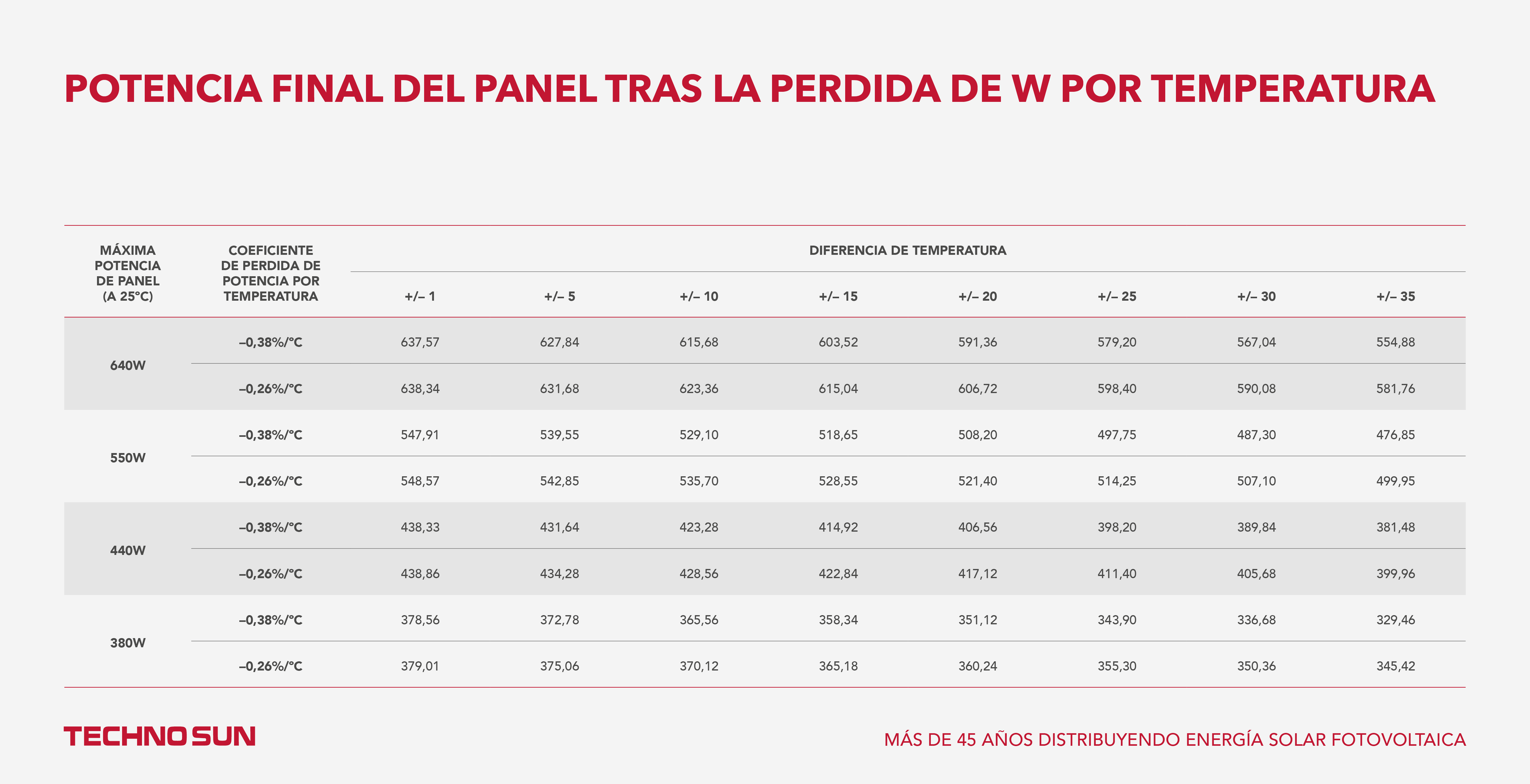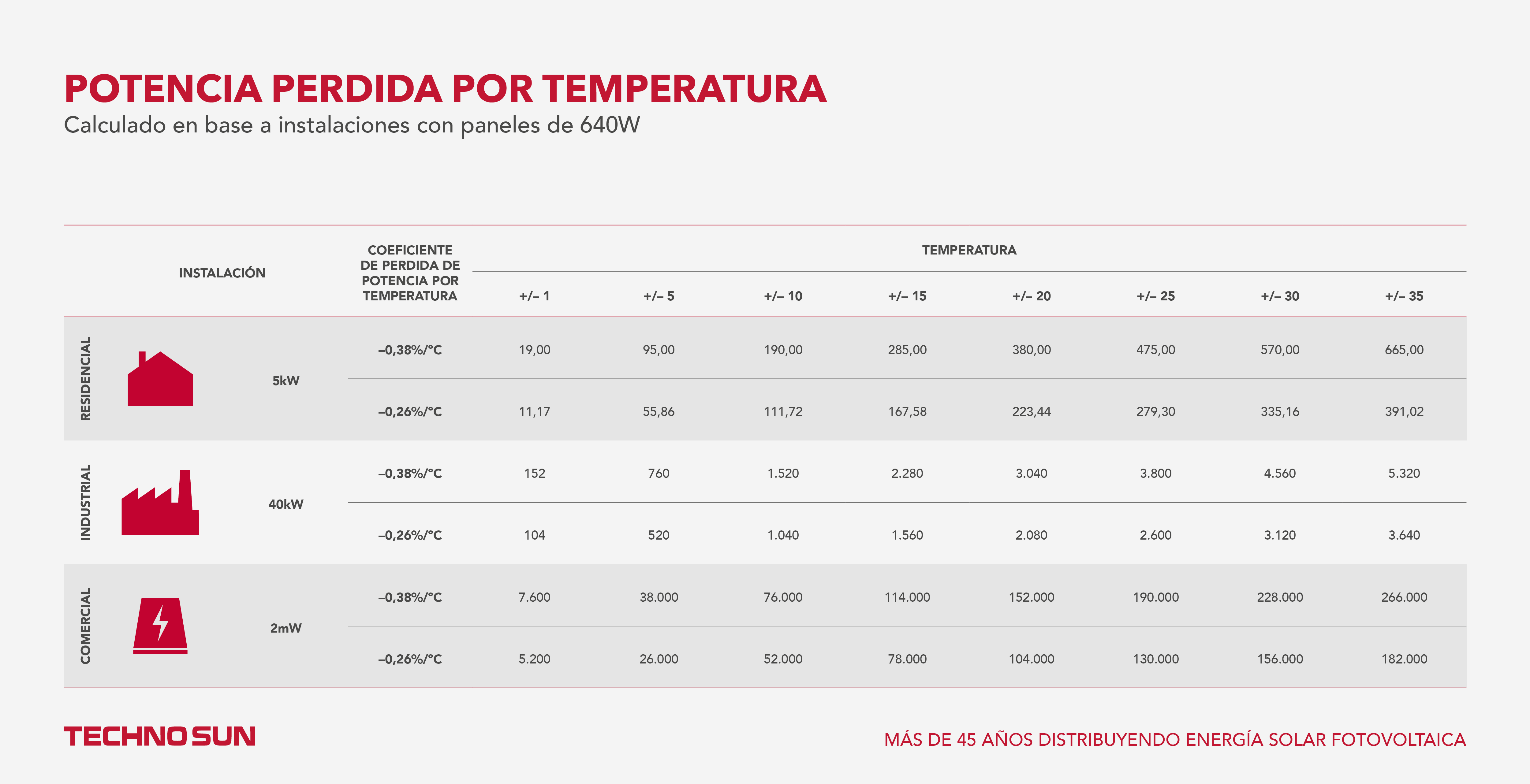Effect of temperature on solar panels
The loss of power from solar panels due to temperature is one of the great enemies of photovoltaic installations. Up to 15% of the energy generated by the photovoltaic module.
can be lost. When planning a photovoltaic installation, we must take into account the consumption to be made and thus be able to know how many photovoltaic panels will be needed to cover all energy demands. These studies usually include an oversizing to cover possible increases in consumption or decreases in production due to external factors.
These calculations are usually made on the basis of the parameters indicated by the manufacturer, which can be found both in the data sheets and on the back of the solar panels. Although the first one we usually look at is the maximum power of the panel, it is also important to look at other parameters such as efficiency. Efficiency is usually given as a percentage and is the ratio between the electrical power delivered by the panel and the power of the radiation incident on it.
How does cold weather affect solar panels?
When the outside temperature drops, solar panels can produce more electricity than when it is warm. This is because cold weather makes the semiconductor materials in solar panels more efficient at converting sunlight into electricity.
However, solar panels lose some efficiency due to the lower intensity of sunlight in winter. And, if the solar panels are covered with snow or ice, they will be even less efficient.
So if you live in an area with cold winters, it's important to make sure your solar panels are kept clean and free of snow and ice. A little extra effort can go a long way in ensuring that your solar panels are able to produce electricity efficiently, even in the dead of winter.
How does heat affect solar panels?
When the days are longer and the sun is higher in the sky, the temperature also increases. This can have a negative impact on solar panels, as the heat can make them less efficient.
Solar panels work by converting sunlight into electricity. They consist of a series of cells, which are made of semiconductor material, usually silicon. When the silicon heats up, it produces a voltage drop in the solar modules, decreasing the power generated. On the other hand, this decrease in energy is compensated by having more daylight hours.
Parameters under perfect standard conditions
Power loss coefficient by temperature


As an example, assuming that we have an installation of five 640W panels, with a temperature power loss coefficient of -0.38%/ºC, at an average temperature of +/- 10ºC, something that occurs during most of the summer, the losses of the installation will be 121.6W. If we extrapolate this to industrial installations, where there may be 30 modules installed, we are talking about 729.6W of losses in the case of panels. In the case of higher temperatures, something that can easily occur in summer, since it is the temperature of the panel, if the ambient temperature is +/- 10ºC, the module that is long hours in the sun will reach very high temperatures. With a panel temperature of +/- º35 ºC, we would lose 85.12W per module, with five panels we would lose 425.6W and with thirty panels we would lose 2,553.6W.
The difference between the coefficient of power loss due to temperature is even more reflected when the installation is larger. For example, in a residential installation of 5kW with a temperature variation of +/- 10ºC, the difference between the panel less resistant to temperature changes and the one more resistant will be almost 80W, the first would lose 190W while the second would lose 111,72W. In a 50kW industrial installation, the difference is even greater, being almost 500W, with 1,520W versus 1,040W. In a 2mW commercial installation, the installation with a higher coefficient the power losses would be 76,000W and with a lower coefficient the losses would be 52,000W, a difference of 24,000W.

Just as there is a temperature coefficient for power, we can also find it for current and voltage. With the first one, the temperature increase will not produce a great variation, being the increase of the intensity minimal, while in the case of the voltage if there is a decrease of the same one, that ends up producing the decrease of the power of the solar panel.
In summary, when choosing the photovoltaic module for our installation and sizing it, we must take into account the usual and extreme weather conditions where the panels will be located in order to calculate and oversize the installation if necessary, and thus be sure that the energy production will always be optimal.
At Techno Sun we are committed to the highest quality products and that is why our panels have the lowest temperature coefficients in the market, thus ensuring the maximum possible energy production in the installations.
Pérdida de potencia debido a la temperatura